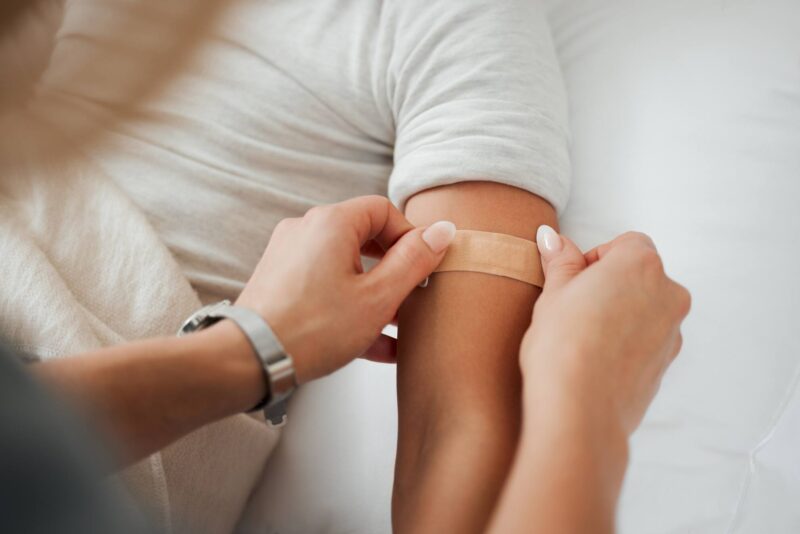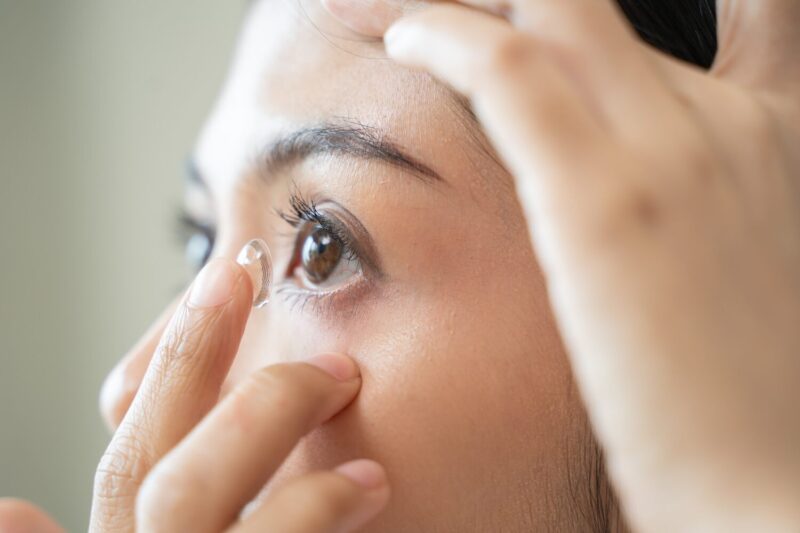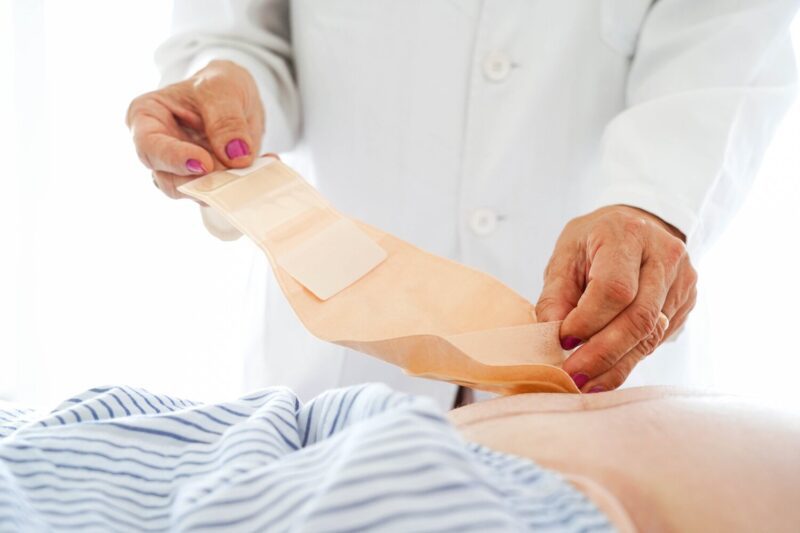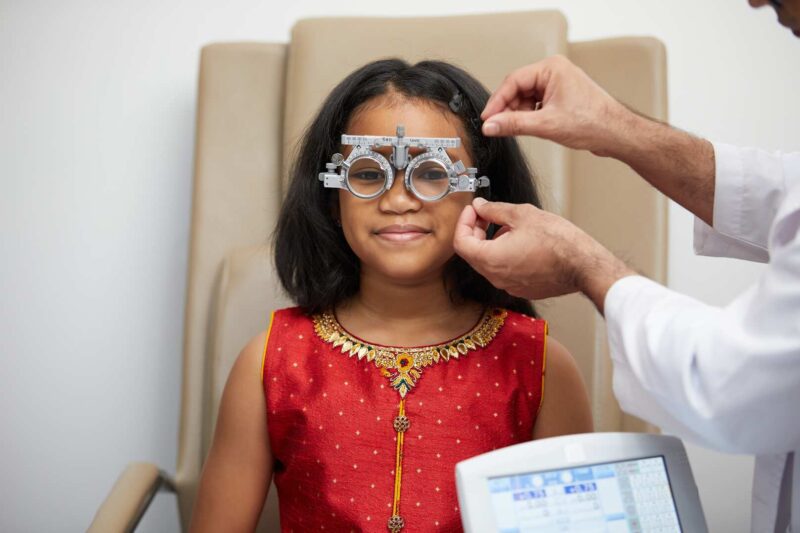Leveraging expertise in silicone chemistry to aid innovation in medical adhesives
By Izzy Jones, Priya Joshi, and John Daly
Medical adhesives are crucial in today’s healthcare sector.
Despite the changing requirements of patient care, medical adhesives have continuously demonstrated remarkable versatility. This adaptability is evident in the expanding product range and growing market projections. In 2021, the medical adhesive market was valued at 8.8 billion USD and is expected to reach 12.3 billion USD by 2026.1
Through advancements in chemistry and material science, the evolution and enhancement of medical adhesives have helped create products that can address a much broader range of medical needs. The most ubiquitous example of medical adhesives is the humble plaster.
Over the years, this has evolved and expanded into a whole new market of dressings and wound care – not to mention the introduction of drug delivery patches and ostomy products which all hinge on the ability to create breathable adhesives which are gentle on the skin. Furthermore, outside of medical applications, stick-on personal care products have also seen a boom over the last few years.

As an expert in the manufacture of ocular and dental monomers, Cornelius has noticed the synergies between these two sectors and the evolving market of medical adhesives. As such, taking insights from these sectors can help to drive continued innovation in medical adhesives.
In this blog, Cornelius will explore how the ingredients used to manufacture medical adhesives have evolved over the last few years and discuss how the technologies developed for the ocular industry are crossing over into medical adhesives and personal care as well as what benefits this will bring.
Monomers to Polymers
Let’s start with the basics. A lot of the materials developed for the medical adhesives market have evolved from those created to make contact lenses and dental moulds. These materials begin with monomers, small molecules that are mixed, polymerised, and cured to create fit-for-purpose materials.
In the dental and ocular industry, methacrylate is the most common monomer, creating the perfect backbone that can be chemically altered through the addition of functional groups to create a material with the desired properties for use.
Methacrylate-based monomers have been popular in the ocular market for many years due to their ability to polymerise quickly. In the 1960s, Czech chemists Otto Wichterle and Drahoslav Lím published a paper in Nature on the synthesis of hydrophilic crosslinked networks of polymers to develop plastics suitable for “permanent contact with living tissues”2.
The result, poly(2-hydroxyethyl methacrylate) (pHEMA) has had great importance in the development and manufacture of soft contact lenses. The reason that pHEMA works so well as a material for contact lenses is due to rotation around the central carbon atom allowing it to function as a hydrogel. In water, the polar hydroxyethyl side turns outwards allowing the material to be flexible. But in air, the non-polar methyl group sits outwards, creating a brittle material that can be shaped into a contact lens.
Combining different monomers with HEMA allows chemists to create copolymers with more desirable properties that are still widely used today.
Another example is N-vinylpyrrolidone (NVP), the starting monomer for Polyvinylpyrrolidone (PVP). PVP is a water-soluble compound that has a wide range of uses in both medical and personal care markets. Most notably, it is found in contact lens solutions or as a lubricant in eye drops.

Other acrylate monomers, such as cyanoacrylates, also have a unique set of properties. Due to their easy polymerisation, cyanoacrylates are great monomers to use for quick-setting glues such as superglue. This concept quickly found its way into emergency rooms in the 1950s when surgical glue was introduced as a wound closure technique. Today, 2-octyl-cyanoacrylate and 2-ethyl-cyanoacrylate are the less-toxic cyanoacrylates found in Dermabond and Epiglu respectively.
Silicone Chemistry
Silicone has been used within the medical sector for many years. The synthetic polymer was first used to coat glassware and needles in the medical field; since then, it has become a popular choice for implants, respiratory devices and feeding tubes.3 But what is so special about silicone that makes it the go-to material for medical applications? Firstly, silicone is an inert, highly stable material that can withstand high temperatures and is resistant to both thermal and chemical degradation.
Secondly, hydrophobicity offers excellent water repellence and lubrication as a coating for syringes and surgical tools. This also makes silicone fairly resistant to bacterial growth. And lastly, but most importantly, silicone is biocompatible which ensures safety for long-term implants.3
It’s these properties that make silicone an attractive addition to polymers used in ocular and medical adhesive manufacturing. But silicone’s stability means that, unlike methacrylate, it does not readily polymerise. By combining silicone-containing groups onto a methacrylate backbone, chemists have developed innovative materials that provide the same functionalities as silicone in something easier to polymerise like methacrylate.
Two commonly used silicone-containing monomers in the ocular industry are tris(trimethylsiloxy)silyl propyl methacrylate (TRIS) and 4-vinylphenyl tris(trimethylsiloxy)silane (TTMS). TRIS offers flexibility, non-stinging characteristics and an inability to be washed off easily and TTMS is highly permeable to oxygen. Not only does this provide benefits for the manufacture of contact lenses, but these enhanced properties also make TRIS and TTMS a competitive material for the formulation and development of medical adhesives. Examples currently on the market containing TRIS include 3M’s Cavilon™ No Sting Barrier Film and transdermal drug delivery patches such as those produced by Noven Pharmaceuticals.
Cornelius has a longstanding knowledge and expertise in silicone chemistry across all sectors of its business. As well as having developed and manufactured silicone-based monomers for the ocular and dental industries, Cornelius has also applied its silicone chemistry to develop CorSil Avance, an innovative water-in-silicone emulsifier that can be used in personal care formulations. Looking beyond short-term industry trends and trusting their technical expertise, Cornelius’ scientists were able to develop an ingredient that helps simplify production processes, reduce the number of ingredients, lower overall cost, and improve energy efficiency by 60%.
Medical Adhesives in Action

Functional development of medical adhesives is a valuable industry that has grown exponentially over the last few years. And due to the synergies between ocular and medical adhesives markets, the quality and functionalities of materials have improved. Outside of traditional plasters and dressings, the medical adhesive market has expanded to include wound care, drug delivery patches, and even wearable devices. Desirable characteristics of these novel products include but are not limited to:
● Breathability
● Water-resistance
● Non-irritating/gentle on sensitive skin
Another key application of medical adhesives is those used for ostomy applications. Examples include the adhesive patch which attaches the stoma bag to the opening and silicone-based gels that can be used to fill in the gap between the stoma and the pouch.
With a population that is increasingly online and reliant on digital devices, it’s no surprise that technology has also infiltrated the healthcare market. In our recent biohacking blog, we explore the rise of wearable devices that allow consumers to track metrics such as the number of steps taken, heart rate and blood glucose levels.
Blood glucose tracking is especially important for people living with diabetes. For those with Type 1, those whose pancreas stops producing insulin, understanding how blood glucose levels change throughout the day is critical to stopping a fatal hyper-/hypo-glycemia episode. For those with Type 2, where the body doesn’t produce enough insulin, monitoring how food intake may result in unexpected changes to blood sugar levels is also vital. Additionally, stick-on ECG monitors and electrodes may also be used by individuals to monitor heart rate, as well as in hospitals by medical professionals. In some cases, these monitors often need to be worn for a few days at a time before being changed. As such, ensuring the adhesive used is water- or sweat-resistant is of the utmost importance. Another key consideration is breathability; if an individual wears a device for up to a week, it’s imperative that the skin under and around the adhesive can breathe, is not irritated, and remains healthy.
Orthokeratology for Myopia
While the role of digitalisation in the modern age has led to innovation in many areas of our lives, including medical advancements, it has also led to unexpected consequences. Myopia, also known as near-sightedness, is one of the most prevalent eye conditions in which close objects remain clear, but those in the distance become blurry. Affecting around 22% of the global population – both adults and children – myopia happens when the shape of the cornea in the eye elongates and causes incoming light rays to bend or refract.4,5 Despite its prevalence, myopia can be easily corrected using visual aids such as glasses and contact lenses, as well as the progressively popular laser eye surgery.6,7
Although the underlying cause of myopia has been linked to both genetic and environmental influences, its sudden increase in the modern age could be linked to the increased use of digital screens.8,9 In fact, Dr. John Bolger who runs the Myopia Control for Children clinic at an independent London eye hospital recently discussed how young people spending extended periods looking at screens as opposed to being outdoors may exacerbate the problem.10,11 Over the past decade, several large-scale population-based prevalence has emerged, with the highest rates being reported in Asia-Pacific countries.12 For children in particular, rates in East and Southeast Asian countries were found to be generally higher than in other parts of the world.6 However, although increased access to digital devices may be linked to higher rates, innovation and evolving technology can also provide a solution to this growing health concern.
Orthokeratology (also known as ortho-k) has emerged as a popular treatment for myopia.13 Ortho-k is the use of specially designed and fitted contact lenses that help to temporarily reshape the cornea and improve vision. This revolutionary treatment has been made possible through innovation in silicone-based chemistry for contact lens development and is helping to deal with the growing rates of myopia across the globe.

At Cornelius, we are proud to be at the forefront of innovation in ophthalmology such as ortho-k. With a longstanding reputation of working with some of the biggest contact lens manufacturers in the world, we have helped our customers develop specialised monomers that can work for niche applications and needs. Our longstanding experience in the ocular space is of the utmost importance when navigating regulatory requirements. Cornelius is regularly audited by existing and potential customers to ensure that we continue to deliver unparalleled Q&R support during innovation. We also hold ISO 9001 (concerning quality) and ISO 45001 (concerning health and safety), further demonstrating our reputability and safe operating environments. With the multitude of chemicals and hazards that can occur during manufacture, Cornelius is committed to continually deliver safe, quality products.
Stick to what you know?
From basic plasters to sophisticated drug delivery patches, the applications of medical adhesives have expanded over the last decade. In addition, the synergies between the ocular and dental industries have highlighted the potential for cross-sector innovation. Owing to silicone’s unique properties and the innovative use of methacrylate backbones, monomers have been developed to offer benefits such as breathability, water resistance, and non-irritating formulas for sensitive skin. Through this, the industry has yielded innovative products – from wound care to wearable devices – which provide improved functionality and enhance patient outcomes.
Although increased screen time may have led to the unprecedented rise in myopia, advancements in contact lens technology, such as ortho-k, offer promising solutions. Cornelius’s expertise in silicone chemistry and monomer manufacturing positions us to drive these innovations and support our customers who are looking to create more sustainable, cutting-edge solutions for the ocular, dental and medical adhesives sectors. Additionally, our commitment to quality and regulatory compliance ensures that they continue to support these markets and help you address novel medical challenges in the future.
Learn more about our UK Manufacturing capabilities and offerings here.
References
- Markets and Markets. (2021). Medical Adhesives Market Size, Industry Share Forecast. Available at: https://www.marketsandmarkets.com/Market-Reports/medical-adhesive-market-41880473.html [Accessed July 2024]
- Wichterle, O. and Lím, D. (1960) ‘Hydrophilic gels for biological use’, Nature, 185(4706), pp. 117–118. doi:10.1038/185117a0
- Medical Plastics News. (2022). Three Primary Uses of Medical-Grade Silicone in Healthcare. Available at: https://www.medicalplasticsnews.com/medical-plastics-industry-insights/
medical-plastics-materials-insights/three-primary-uses-of-medical-grade-silicone-in-healthcare/ [Accessed July 2024] - Tomiyama, E. (2024). Myopia: An Epidemic of Global Proportions. Optometry Times. Available at: https://www.optometrytimes.com/view/myopia-an-epidemic-of-global-proportions [Accessed July 2024]
- Holden, B.A. et al. (2016) ‘Global prevalence of myopia and high myopia and temporal trends from 2000 through 2050’, Ophthalmology, 123(5), pp.1036–1042. doi:10.1016/j.ophtha.2016.01.006.
- Foster, P.J. and Jiang, Y. (2014) ‘Epidemiology of myopia’, Eye, 28(2), pp.202–208. doi:10.1038/eye.2013.280.
- Pan, C., Ramamurthy, D. and Saw, S. (2011) ‘Worldwide prevalence and risk factors for myopia’, Ophthalmic and Physiological Optics, 32(1), pp. 3–16. doi:10.1111/j.1475-1313.2011.00884.x.
- The Economist. (2022). Short-Sightedness Has Become an Epidemic. Available at:https://www.economist.com/leaders/2022/06/09/short-sightedness-has-become-an-epidemic [Accessed July 2024]
- Williams, K.M. et al. (2015) ‘Increasing prevalence of myopia in Europe and the impact of Education’, Ophthalmology, 122(7), pp. 1489–1497. doi:10.1016/j.ophtha.2015.03.018.
- Graham-Brown, D. (2024). Too Much Time Staring at Mobile Phones is Putting Children at Risk of Blindness, Top Eye Surgeons Warn. Daily Mail. Available at: https://www.dailymail.co.uk/health/article-13205761/mobile-phones-children-risk-blindness.html [Accessed July 2024]
- My-iClinic. (2024). Our Specialists: John Bolger. Available at: https://www.my-iclinic.co.uk/our-specialists/john-bolger [Accessed July 2024]
- Mayo Clinic. (2024). Nearsightedness. Available at:https://www.mayoclinic.org/diseases-conditions/nearsightedness/symptoms-
causes/syc-20375556 [Accessed July 2024] - Mukamal, R. (2023). What is Orthokeratology?. American Academy of Ophthalmology. Available at:https://www.aao.org/eye-health/glasses-contacts/what-is-orthokeratology [Accessed July 2024]